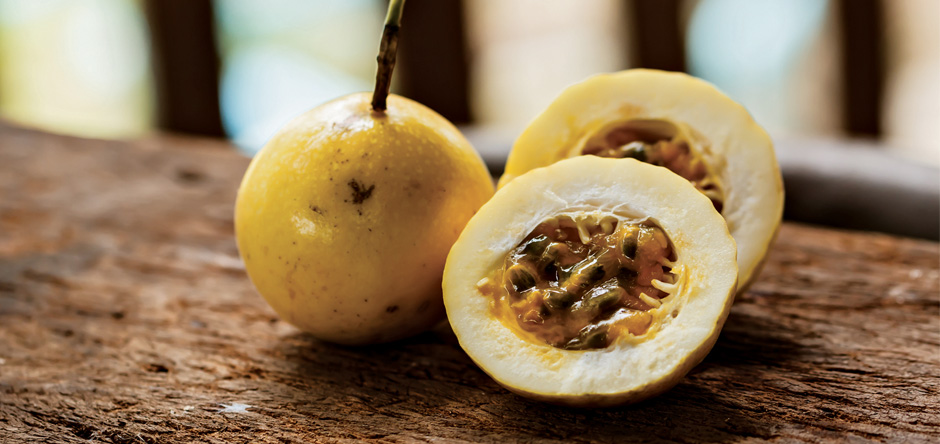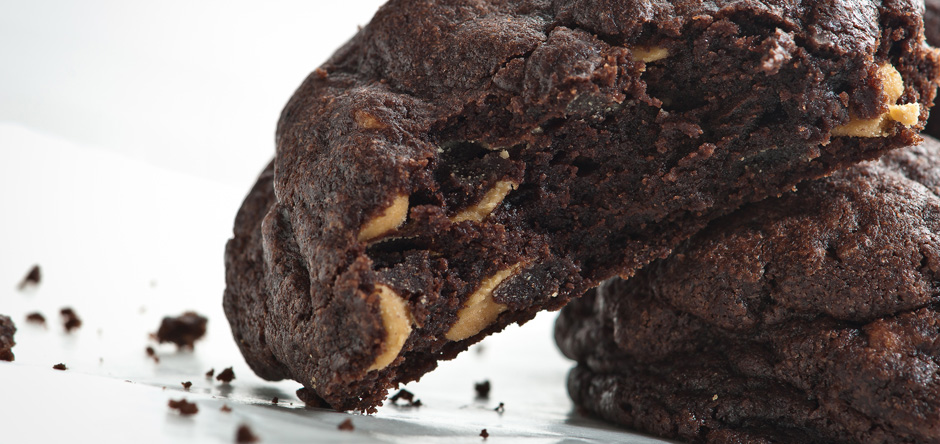Just as May WAG (“Passion Flowers”) took its inspiration from the passion flower, so July takes its cue from the bittersweet, seedy fruit that is a species of the flower (“Passion’s Fruits”).
The flower’s Latin genus name, Passiflora, was coined by Spanish missionaries who used it to teach the indigenous peoples of South America about Jesus’ passion, death and resurrection.
But passion fruit isn’t big only in Latin America. The fruit and the foods it inspires are savored around the world, including in the United States where passion fruit is grown on climbing vines in such temperate areas as Florida, Arizona, California and Hawaii.
Though the fruit is harvested heavily in late summer, with peak eating seasons in January and spring, it’s available year-round. (WAG found it recently online in Shop Rites in Garnerville and Milford.)
But even if you can’t find it locally at the moment, that shouldn’t stop you now from savoring passion fruit in other forms. In White Plains, you can sip a passion fruit mojito, made from Parrot Bay Passion Fruit Rum and passion fruit purée, at Serafina or The Republic of Tea’s bottled Passion Fruit Green Tea — which, despite the moniker, is actually a lovely ruby color — at Mariposa in Neiman Marcus Westchester.
Recently, Dannon’s 80-calorie Light & Fit Greek Yogurt began offering a creamy, tangy passion fruit flavor in a limited edition. Fortune 500 companies love passion fruit. In 2010, the Coca-Cola Co., whose Fanta soda comes in passion fruit, nonprofit TechnoServe and the Bill & Melinda Gates Foundation launched a partnership to enable more than 50,000 mango and passion fruit farmers in Uganda and Kenya to increase their productivity and double their incomes by participating in Coca-Cola’s supply chain for the first time.
Such enterprises are not surprising for the versatile fruit, which comes in a grapefruit-size golden variety and a lime-size purple one and is rich in B vitamins, vitamins A and C, copper, fiber, iron, magnesium, niacin, phosphorus and especially potassium. In Hawaii, you can enjoy passion fruit jam and jelly along with a syrup that’s used on everything from shaved ice to marinated meats and veggies.
Down Under, passion fruit tops pavlova, a regional meringue cake, and flavors the popular soft drink Passiona and alcoholic beverages. In Brazil, it’s the basis for a mousse that’s a popular dessert.
The Portuguese, particularly on the islands of the Azores and Madeira, like their passion fruit in mousse and liqueur form, while Sri Lankans like to juice it. (Passion fruit is also made into an oil that has both cosmetic and dietary uses.)
One of the best ways to enjoy passion fruit, however, is fresh and unadorned. The purple variety is juicier and more flavorful. But whichever variety you chose, experts say you should look for a fruit that is ripe, plump, heavy in the hand and wrinkled (an indication of its sweetness). Minor cuts and spots are fine.
Store the fruit in a basket in a cool, dark place for a couple of days. Or, if it’s ripe, put it in the refrigerator, where it will keep for a week.
When you are ready for your passion fruit, wash it in cold water, pat it dry, cut it lengthwise and scoop out the pulp, which also freezes well.
You can give it a little Mexican zing by accenting it with chili powder and lime. But remember that the Brazilians sometimes use it instead of lime in mixing a caipirinha, their national, sugar cane-based cocktail.
Proving that the passion fruit is passionate enough.





